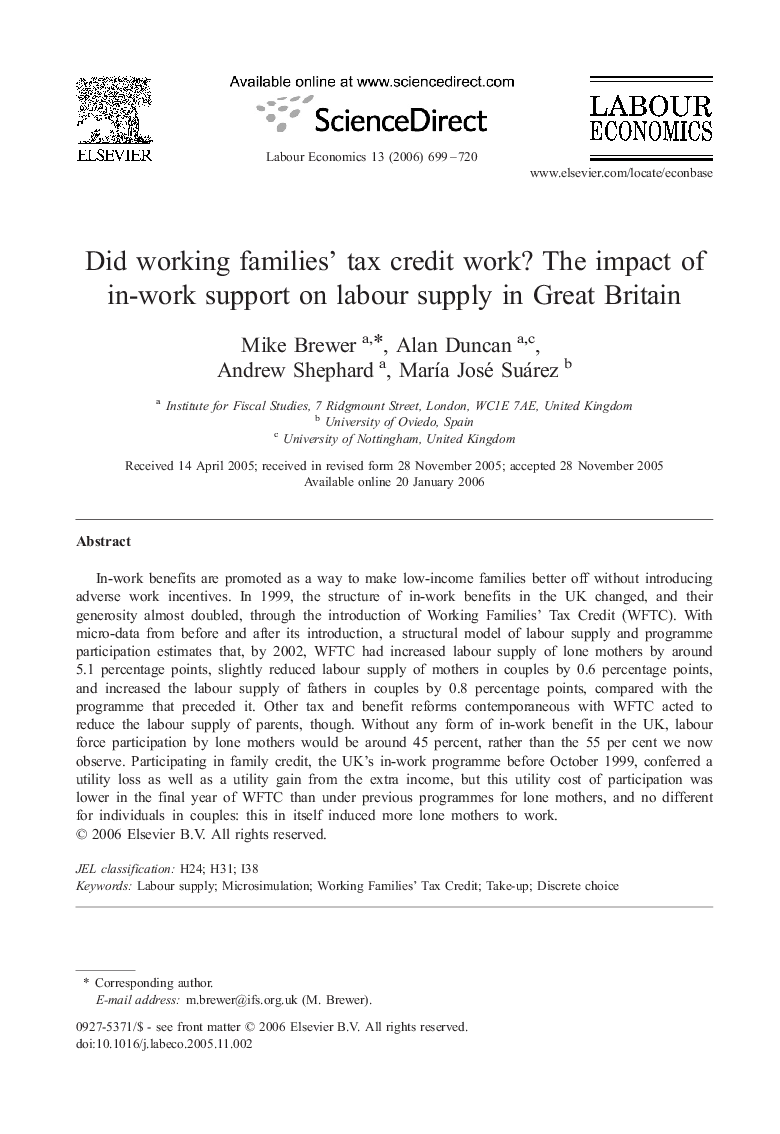| کد مقاله | کد نشریه | سال انتشار | مقاله انگلیسی | نسخه تمام متن |
|---|---|---|---|---|
| 971816 | 932403 | 2006 | 22 صفحه PDF | دانلود رایگان |

In-work benefits are promoted as a way to make low-income families better off without introducing adverse work incentives. In 1999, the structure of in-work benefits in the UK changed, and their generosity almost doubled, through the introduction of Working Families' Tax Credit (WFTC). With micro-data from before and after its introduction, a structural model of labour supply and programme participation estimates that, by 2002, WFTC had increased labour supply of lone mothers by around 5.1 percentage points, slightly reduced labour supply of mothers in couples by 0.6 percentage points, and increased the labour supply of fathers in couples by 0.8 percentage points, compared with the programme that preceded it. Other tax and benefit reforms contemporaneous with WFTC acted to reduce the labour supply of parents, though. Without any form of in-work benefit in the UK, labour force participation by lone mothers would be around 45 percent, rather than the 55 per cent we now observe. Participating in family credit, the UK's in-work programme before October 1999, conferred a utility loss as well as a utility gain from the extra income, but this utility cost of participation was lower in the final year of WFTC than under previous programmes for lone mothers, and no different for individuals in couples: this in itself induced more lone mothers to work.
Journal: Labour Economics - Volume 13, Issue 6, December 2006, Pages 699–720